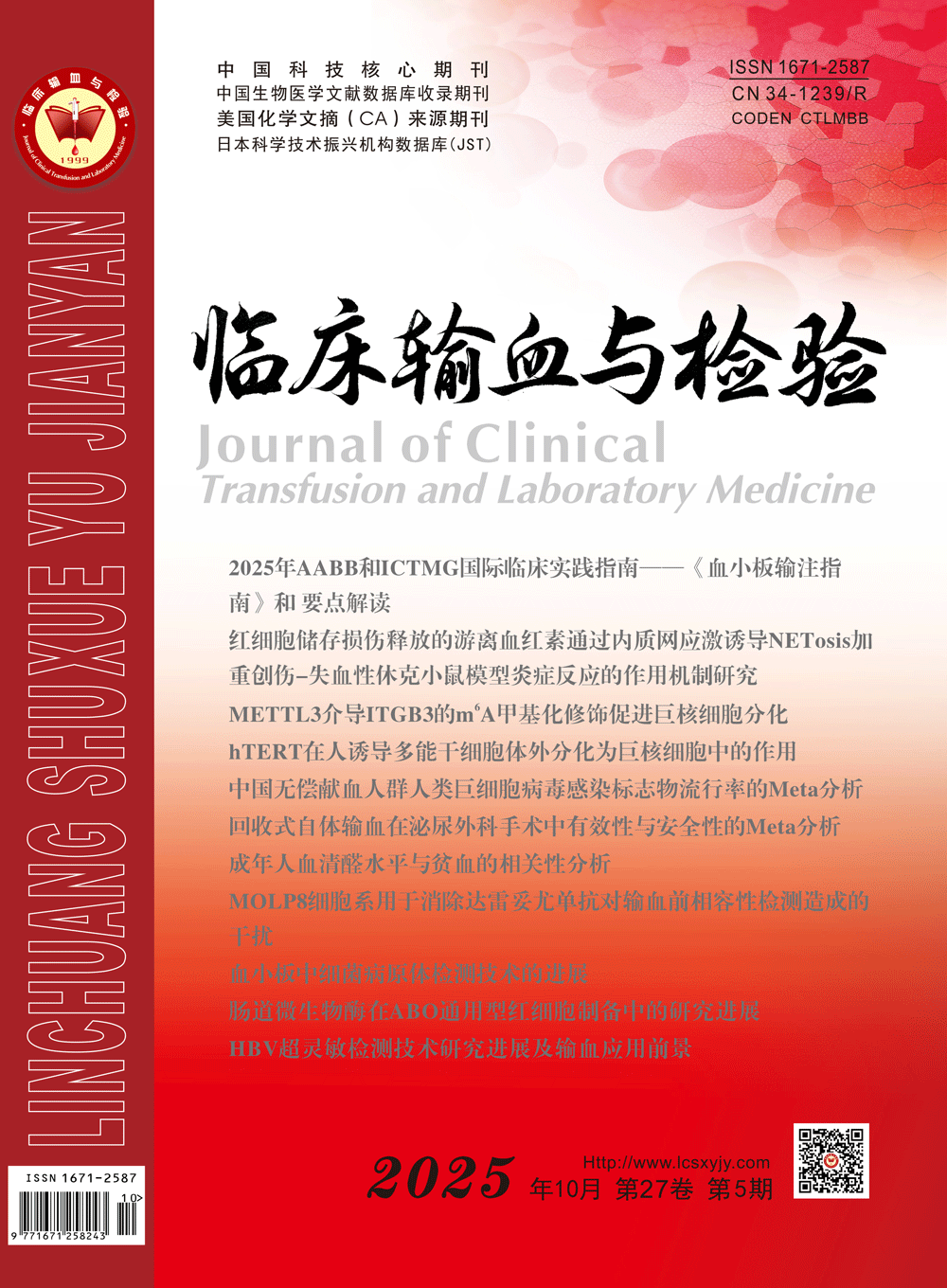|
|
A Comparison of Three Blood Coagulation Assays in Patients with Component Transfusion
GAO Xiao-yun, BAI Wei, WANG Xin-hua
JOURNAL OF CLINICAL TRANSFUSION AND LABORATORY MEDICINE
2017, 19 (4):
336-340.
DOI: 10.3969/j.issn.1671-2587.2017.04.007
Objective To compare the difference of three blood coagulation function assays in patients with blood component transfusion.
Methods Sixty patients who had received platelets and/or plasma transfusions were selected to carry ouy routine haemostatic assays,thrombelastogram(TEG),and Sonoclot analysis. The correlation and consistency of the three Methods were evaluated.
Results A significant correlation of the R,ACT,PT,APTT and INR were observed in the three Methods. The ANGLE,CR and FIB,that reflect fibrinogen founctions,were also highly correlated,and similar correlation was noted in the MA,TP and PLT that indicate platelet founctions. Consistency of the parameters of R,ACT,and ANGLE and CR exists but the poor uniformity of the other parameters was seen. A significant correlation of TP and INR was observed with bleeding of patients.
Conclusions A satisfactory correlation in routine coagulation tests,TEG and Sonoclot exists. Evaluation of coagulation founction should be based on the laboratory profile tests together with clinical menifestations of the patients.
Reference |
Related Articles |
Metrics
|
|
